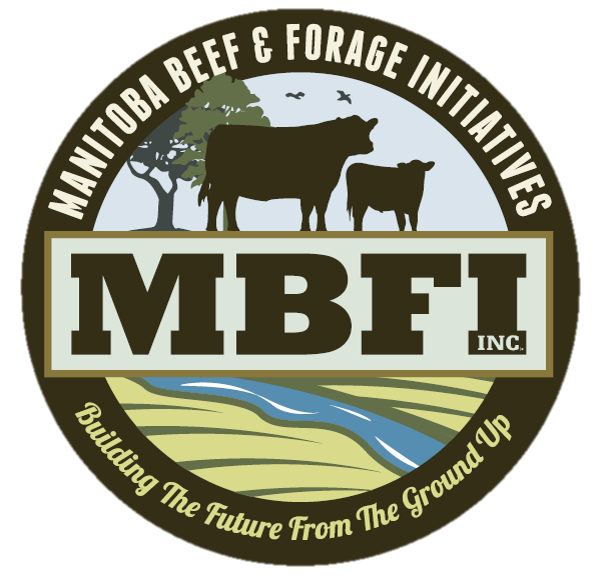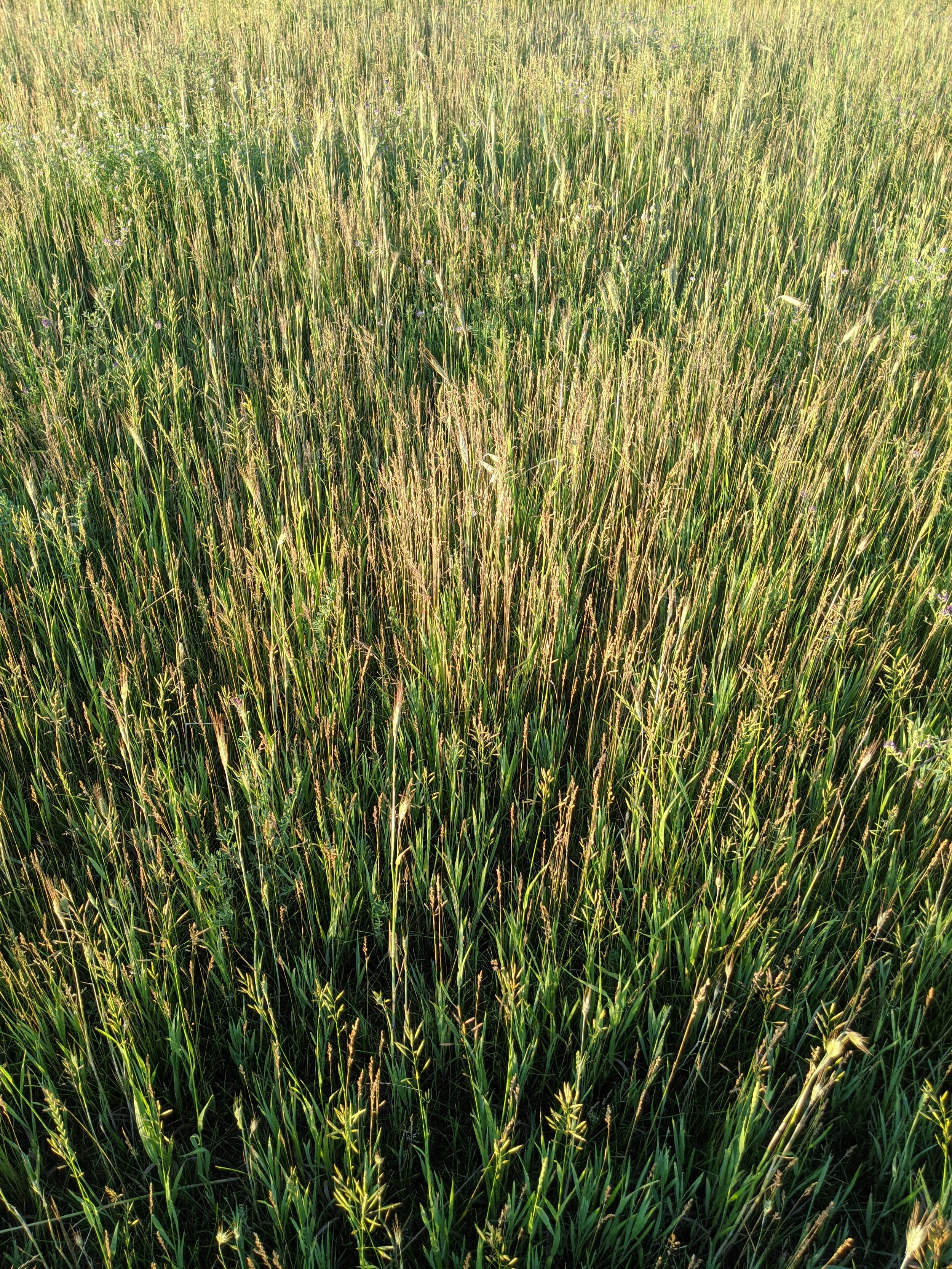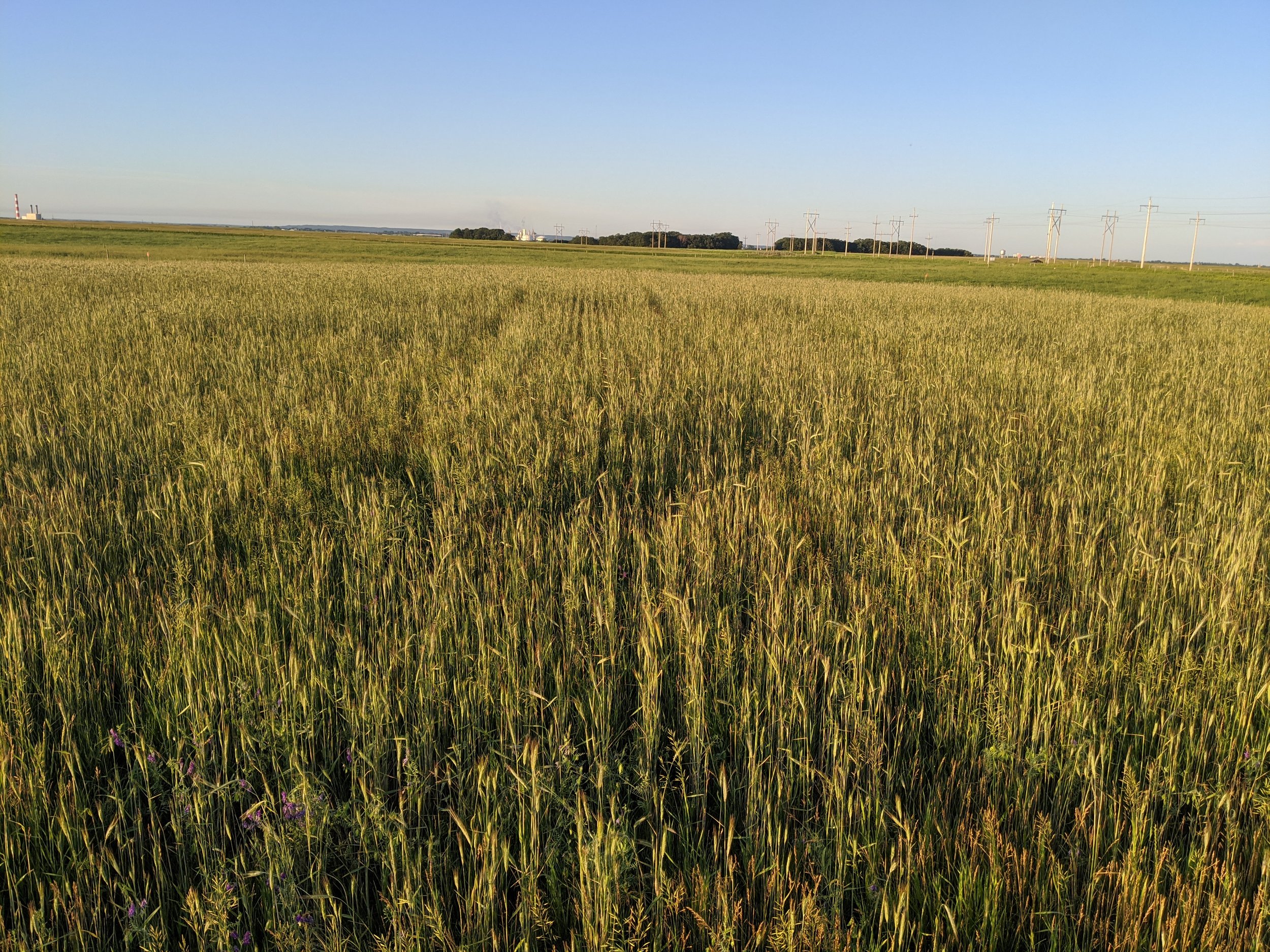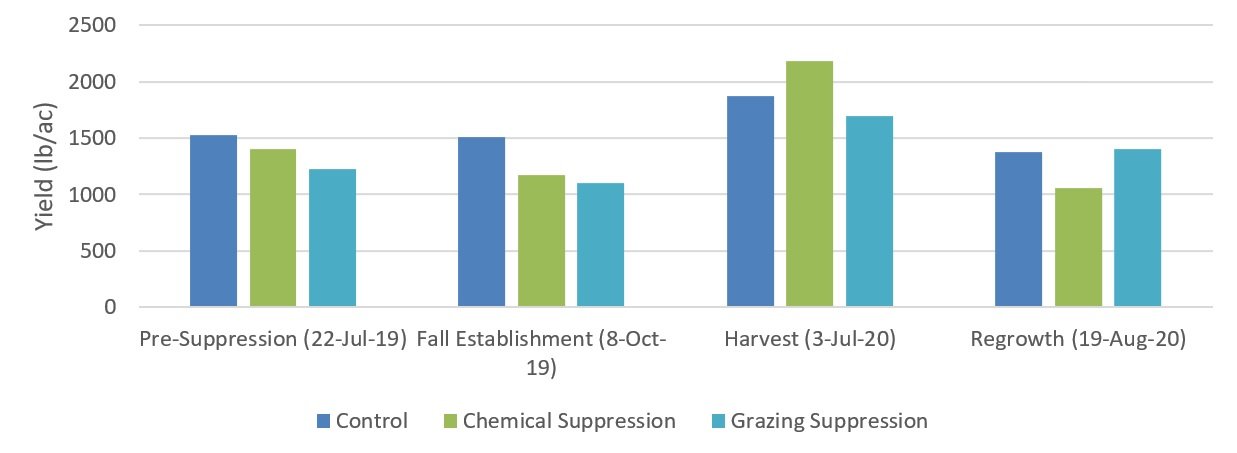Back to Research & Demonstration
Adapting an Australian pasture cropping system to Manitoba
Project Details
Project Lead: Manitoba Beef & Forage Initiatives
Years: 2019-2020
Project Status: Complete
Funding & In-Kind Support: Imperial Seed, Zeghers, Canadian Agricultural Partnership
Location: Johnson Farm
Scope: Demonstration
Keywords: Annual forages, Intercropping
Approach
To adapt the Australian pasture cropping system to Manitoba, a fall crop was seeded as the summer pasture began dormancy. The fall crop can take advantage of any fall rains, spring snow melt, and early summer rains.
Key Findings
Suppression Method: Chemical suppression provided the best control of the existing perennial pasture. There were higher amounts of both winter annuals and hair vetch in the chemical suppression compared to the grazing suppression.
Harvest Yield: The chemical suppression treatment showed the highest yield at harvest. The grazing suppression treatment showed the lowest yield, while the control plots had a middling yield.
Pasture Recovery: The grazing suppression treatment showed better recovery of the perennial pasture 6 weeks post harvest than the chemical suppression treatment.
Crop Use: The combined annual crop and perennial crop were cut for hay/greenfeed. All treatments were suitable for winter feed of cows in their second trimester.
Total yield by period.
Yield of perennial grass and winter annual cereals at harvest (July 3, 2020).
Yield of perennial legumes and hairy vetch at harvest (July 3, 2020).
Full Report:
Related Projects at MBFI:
Industry Resources:
Sod Seeding into Existing Forage Stands - Manitoba Agriculture
Pasture Cropping: an Integrated Approach to Grain and Pasture Production - Permaculture Research Institute







